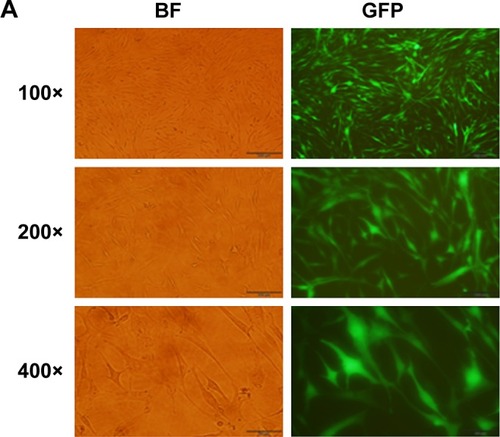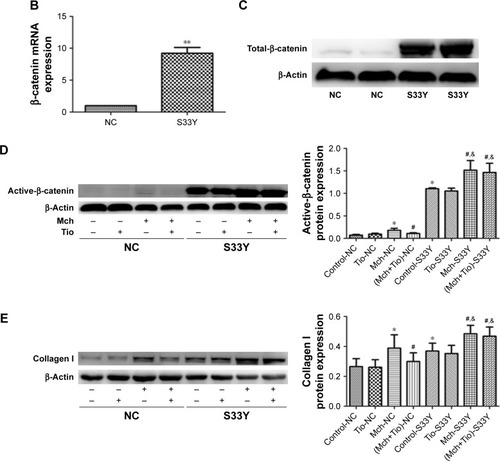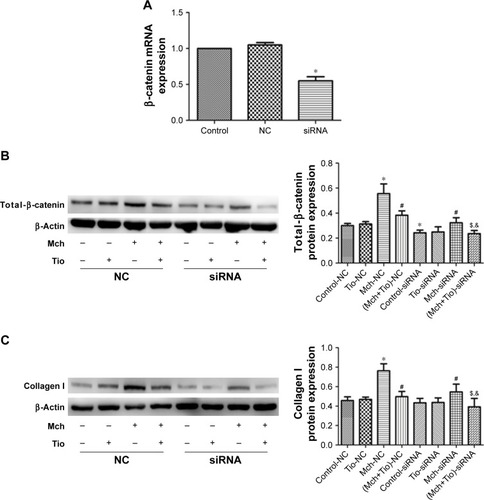Figures & data
Table 1 Clinical conditions for the tissue donors
Table 2 Primers used for the determination of genes’ expression
Figure 1 Typical morphology and identification of primary cultured HASMCs.
Abbreviations: HASMCs, human airway smooth muscle cells; α-SMA, smooth muscle α-actin; DAPI, 4′,6-diamidino-2-phenylindole.

Figure 2 Tiotropium inhibits methacholine-induced ECM production in HASMCs.
Abbreviations: HASMCs, human airway smooth muscle cells; ECM, extracellular matrix; ANOVA, analysis of variance; Mch, methacholine; Tio, tiotropium.

Figure 3 Tiotropium inhibits β-catenin signaling.
Abbreviations: HASMCs, human airway smooth muscle cells; Mch, methacholine; Tio, tiotropium; GSK3β, glycogen synthase kinase-3β; ANOVA, analysis of variance.

Figure 4 Tiotropium decreases the expression of active β-catenin.
Abbreviations: HASMCs, human airway smooth muscle cells; Mch, methacholine; Tio, tiotropium; ANOVA, analysis of variance.

Figure 5 Overexpression of β-catenin antagonizes the effect of tiotropium on collagen I production.
Abbreviations: GFP, green fluorescent protein; MOI, multiplicity of infection; HASMCs, human airway smooth muscle cells; Mch, methacholine; Tio, tiotropium; NC, negative control; S33Y, S33Y-β-catenin mutant.


Figure 6 The effect of β-catenin silencing on the tiotropium-induced inhibition of collagen I production.
Abbreviations: HASMCs, human airway smooth muscle cells; Mch, methacholine; Tio, tiotropium; NC, negative control; siRNA, β-catenin siRNA.

